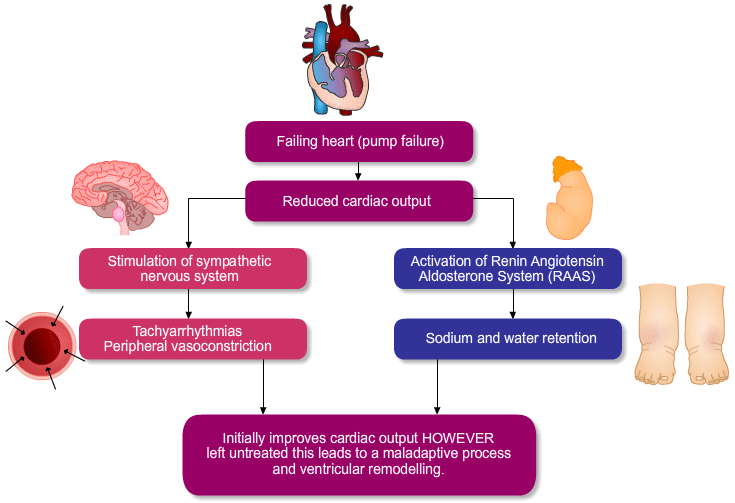Heart Failure progression is often described as a vicious circle. This refers to the maladaptive process where the body tries to compensate for the changes caused by the heart failing. This leads to a series of other processes which leads to a circle of heart failure. All the interventions utilised within heart failure management aim to improve symptoms and slow down progression. This simplified model illustrates the processes that occur as a result of a failing heart.

There are various other additional influences on this decompensatory cycle. These include neurohormonal responses, cell necrosis and death.
Failing heart (pump failure) → Reduced cardiac output → Simulation of sympathetic nervous system → Tachyarrhythmias, Peripheral vasoconstruction → Initially improves cardiac output HOWEVER left untreated this leads to a maladaptive process and ventricular remodelling.
Failing heart (pump failure) → Reduced cardiac output → Activation of Renin Angiotensin Aldosterone System (RAAS) → Sodium and water retentio→ Initially improves cardiac output HOWEVER left untreated this leads to a maladaptive process and ventricular remodelling.
Page last reviewed: 28 Jul 2020


